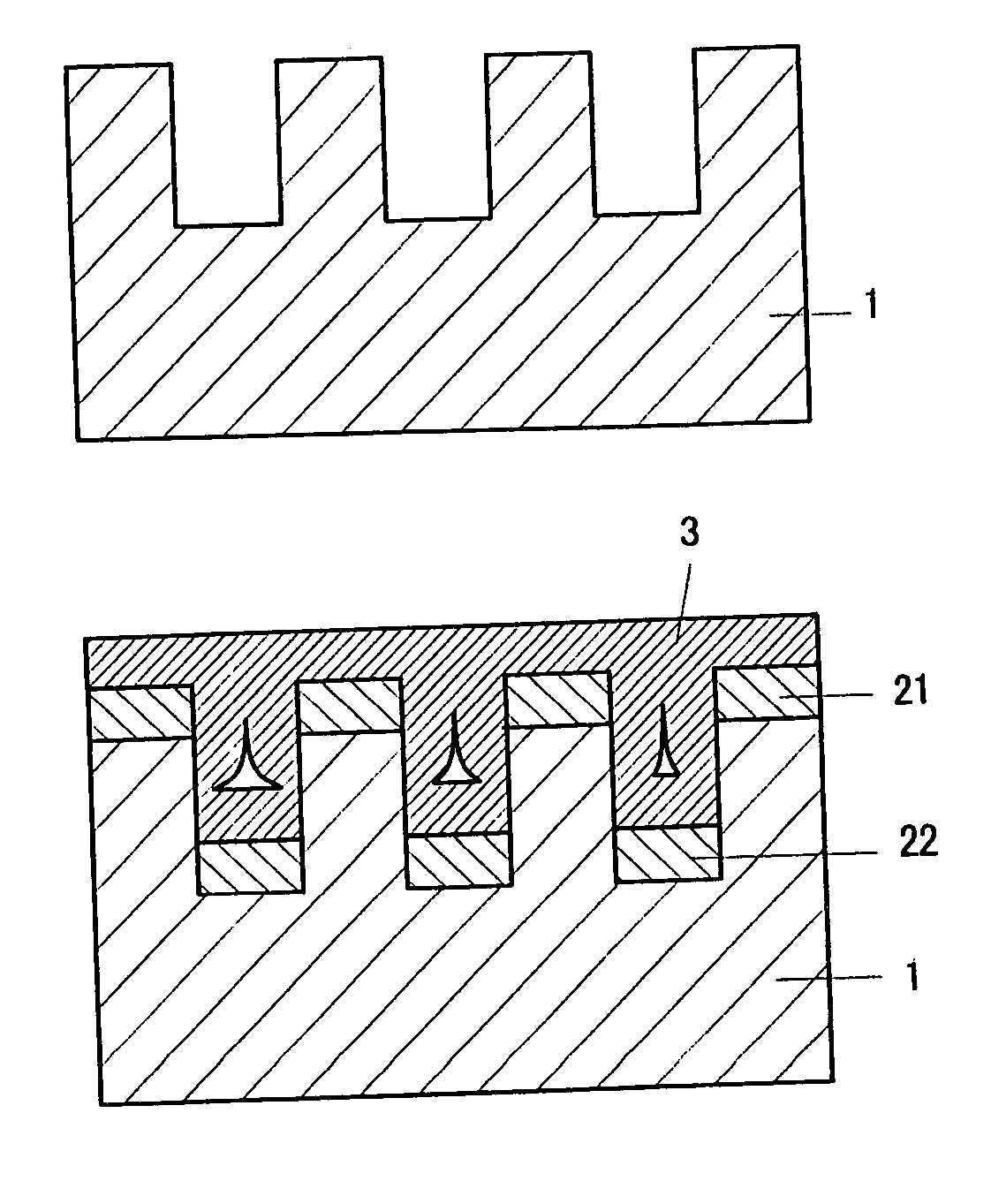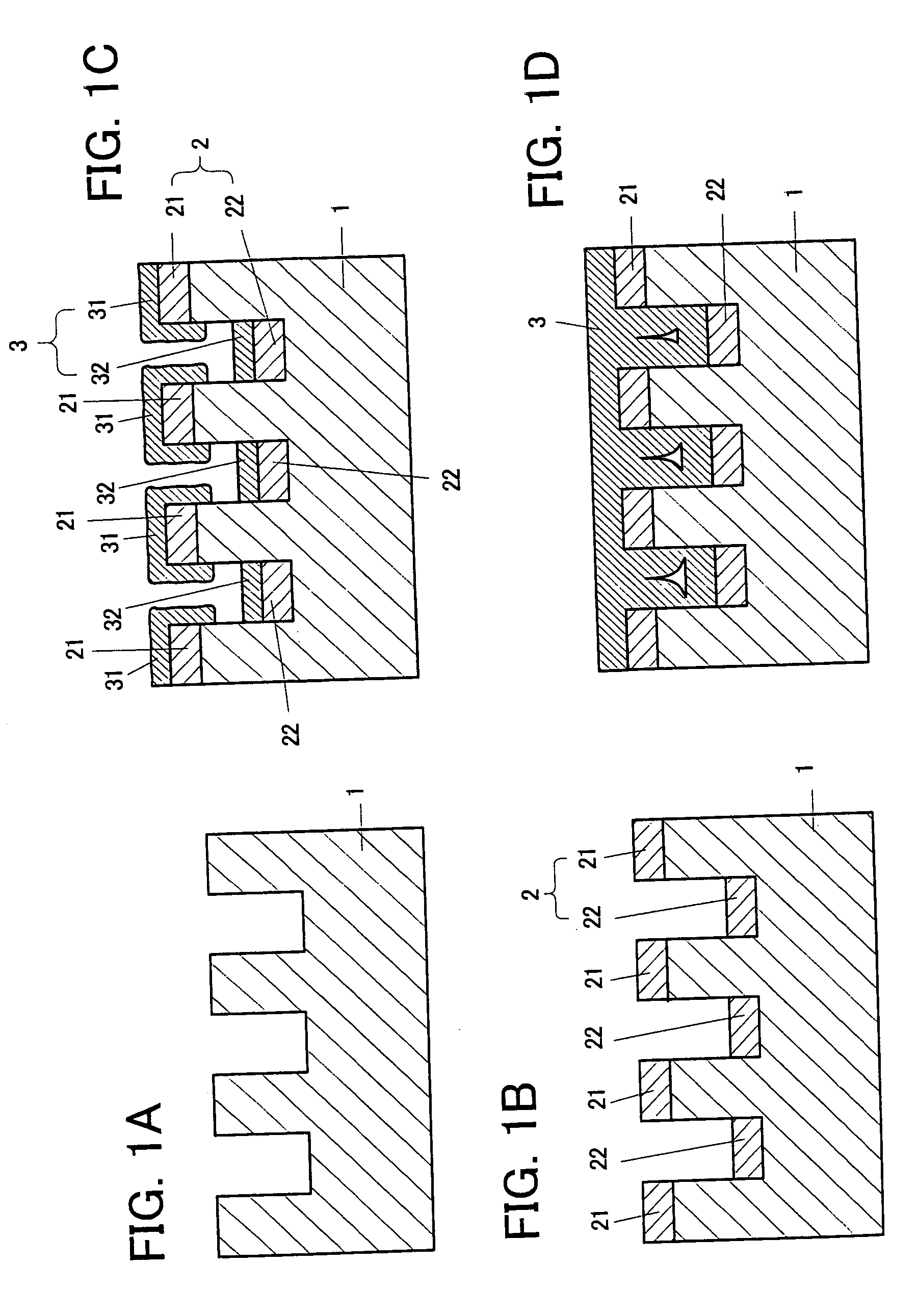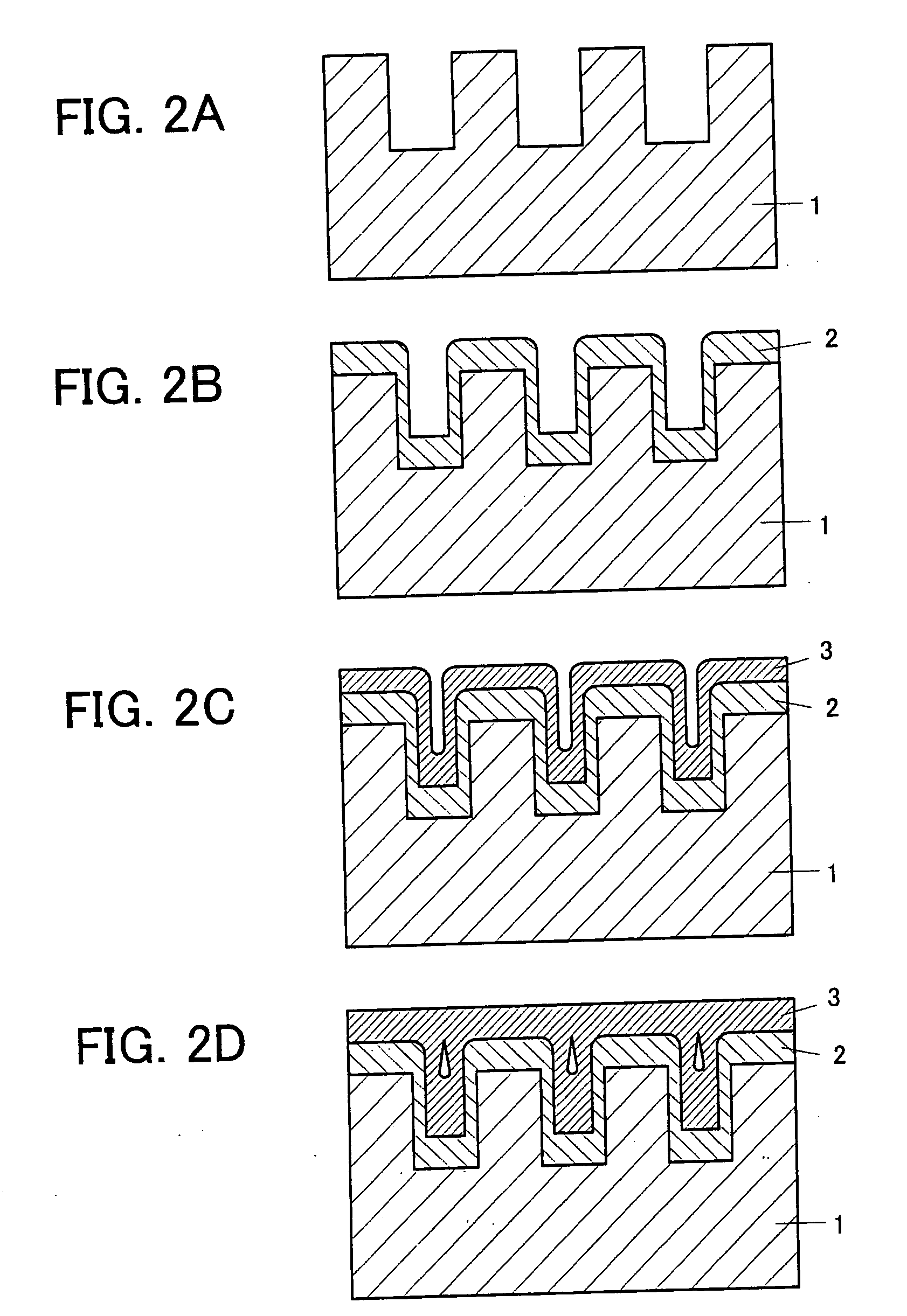Group III nitride compound semiconductor devices and method for fabricating the same
a technology of nitride compound semiconductors and compound semiconductors, which is applied in the direction of semiconductor lasers, semiconductor laser structural details, lasers, etc., can solve the problems of poor device characteristics, low mobility of semiconductor devices, and device problems of unsatisfactory device characteristics, so as to improve service life and mobility. , the effect of improving the ld threshold valu
- Summary
- Abstract
- Description
- Claims
- Application Information
AI Technical Summary
Benefits of technology
Problems solved by technology
Method used
Image
Examples
first embodiment
[0081] A monocrystalline sapphire substrate 1 was prepared such that the a-plane thereof cleaned through organic cleaning and heat treatment serves as the main surface thereof. By carrying out dicing, trenches each having a width of 10 μm and a depth of 10 μm were formed at 10 μm of intervals in a stripe pattern. Next, temperature was set to 400° C., and H2 (10 L / min), NH3 (5 L / min), and TMA (20 μmol / min) were supplied for approximately 3 minutes to thereby form, on the sapphire substrate 1, a buffer layer 2 of AlN having a thickness of approximately 40 nm. The buffer layer 2 was formed mainly on the upper surface and the bottom surface of the trenches of the substrate 1.
[0082] Next, while the temperature of the sapphire substrate 1 was maintained at 1150° C., H2 (20 L / min), NH3 (10 L / min), and TMG (5 μmol / min) were introduced to thereby form a GaN layer 3 through vertical and lateral epitaxial growth. At this time, lateral epitaxial growth from the buffer layer 21, which was mainl...
second embodiment
[0083] A monocrystalline sapphire substrate 1 was prepared such that the a-plane thereof cleaned through organic cleaning and heat treatment serves as the main surface thereof. Temperature was dropped to 400° C., and H2 (10 L / min), NH3 (5 L / min), and TMA (20 μmol / min) were supplied for approximately 3 minutes to thereby form, on the sapphire substrate 1, an AlN layer (first buffer layer) 2 having a thickness of approximately 40 nm. Next, by carrying out dicing, trenches each having a width of 10 μm and a depth of 10 μm were formed at 10 μm of intervals in a stripe pattern. The buffer layer 2 remained only on the upper surface of posts of the substrate 1 (FIG. 5(b)).
[0084] Next, while the temperature of the sapphire substrate 1 was maintained at 1150° C., H2 (20 L / min), NH3 (10 L / min), and TMG (5 μmol / min) were introduced to thereby form a GaN layer 3 was formed through vertical and lateral epitaxial growth. At this time, lateral epitaxial growth from the buffer layer 2, which was m...
third embodiment
[0085] A monocrystalline sapphire substrate 1 was prepared such that the a-plane thereof cleaned through organic cleaning and heat treatment serves as the main surface thereof. Then the surface of the substrate 1 was selectively dry-etched in a short time by reactive ion beam etching (RIE) to have stripe-shaped ruggedness each having a width of 10 μm at intervals of 10 μm. Next, while the temperature of the sapphire substrate 1 was maintained at 400° C., H2 (10 L / min), NH3 (5 L / min), and TMA (20 μmol / min) were introduced for 3 minutes to thereby form an AlN buffer layer 2 having a thickness of about 40 nm. The surface morphology of the rugged portion 22 was different from that of the smooth portion 21 of the buffer layer 2 (FIG. 7(b)).
[0086] Next, while the temperature of the substrate 1 was maintained at 1150° C., H2 (20 L / min), NH3 (10 L / min), and TMA (5 μmol / min) were introduced to thereby form a GaN layer 3 through vertical and lateral epitaxial growth. At this time, mainly the...
PUM
| Property | Measurement | Unit |
|---|---|---|
| thickness | aaaaa | aaaaa |
| thickness | aaaaa | aaaaa |
| thickness | aaaaa | aaaaa |
Abstract
Description
Claims
Application Information
 Login to View More
Login to View More - R&D
- Intellectual Property
- Life Sciences
- Materials
- Tech Scout
- Unparalleled Data Quality
- Higher Quality Content
- 60% Fewer Hallucinations
Browse by: Latest US Patents, China's latest patents, Technical Efficacy Thesaurus, Application Domain, Technology Topic, Popular Technical Reports.
© 2025 PatSnap. All rights reserved.Legal|Privacy policy|Modern Slavery Act Transparency Statement|Sitemap|About US| Contact US: help@patsnap.com



